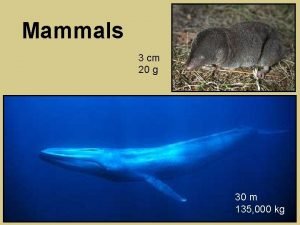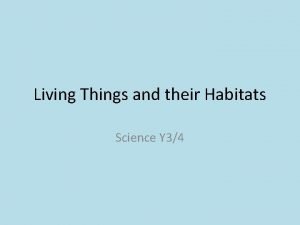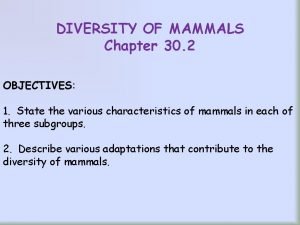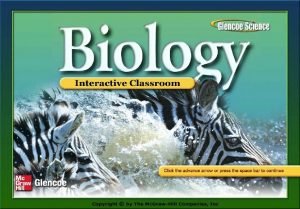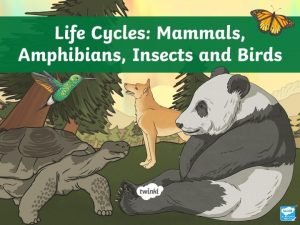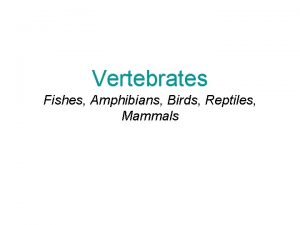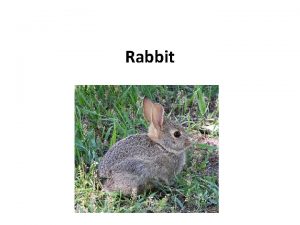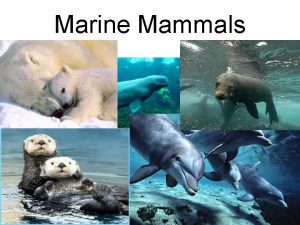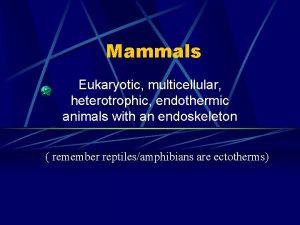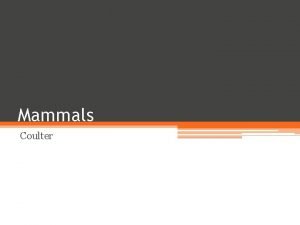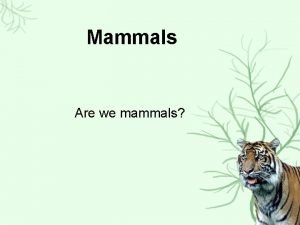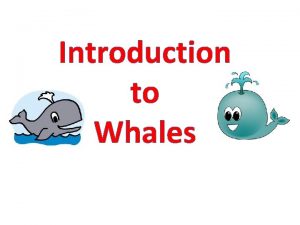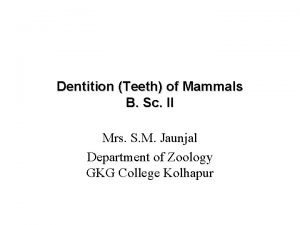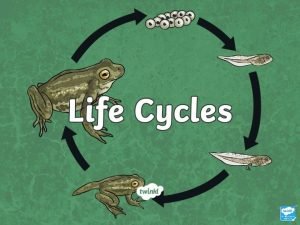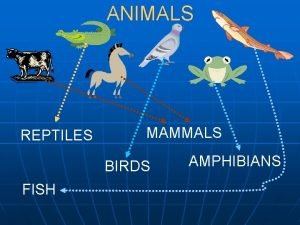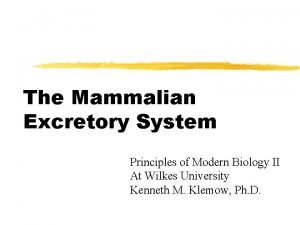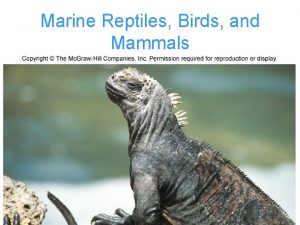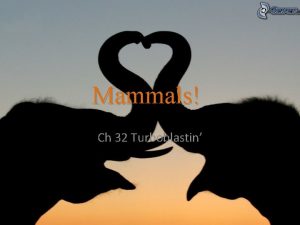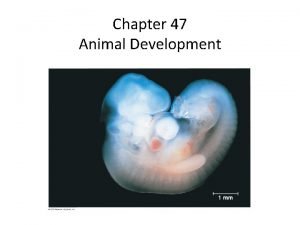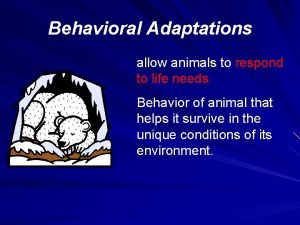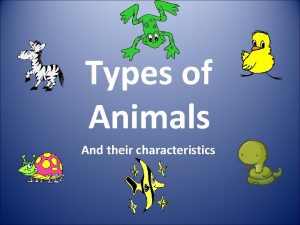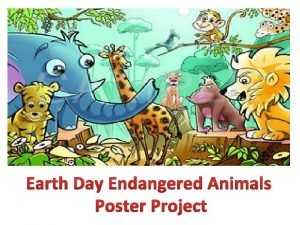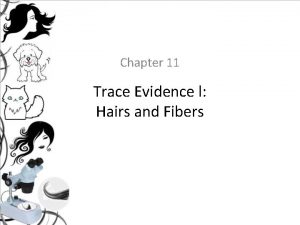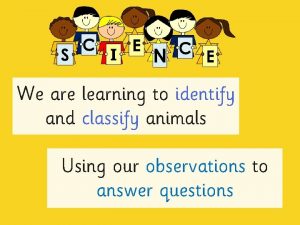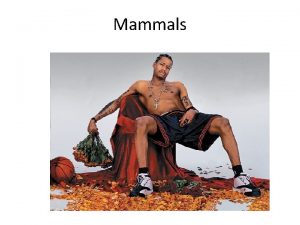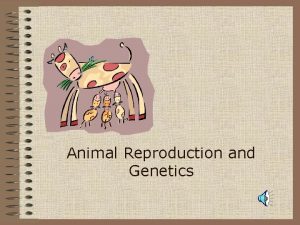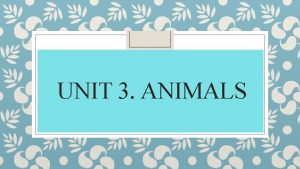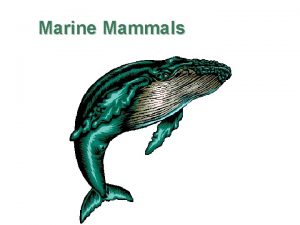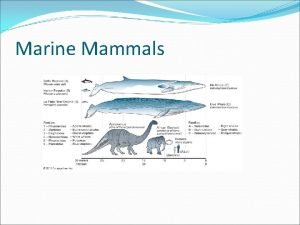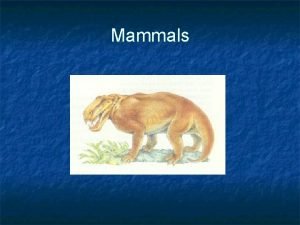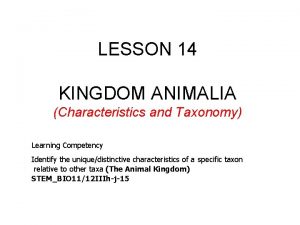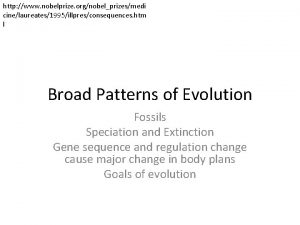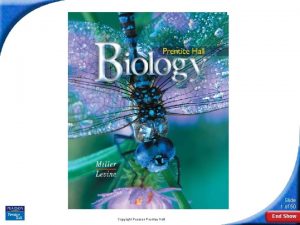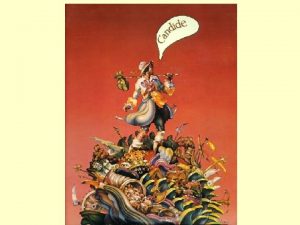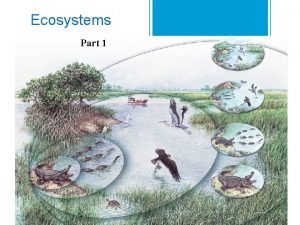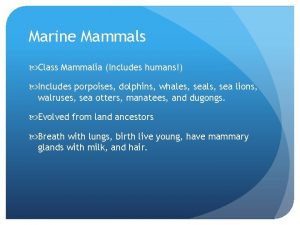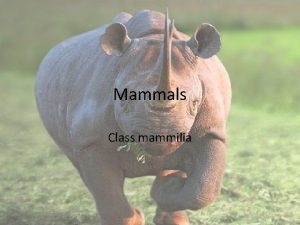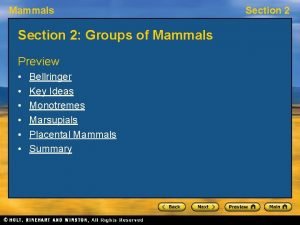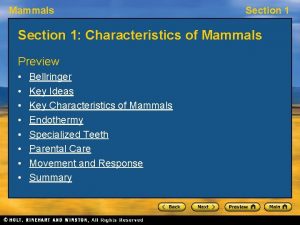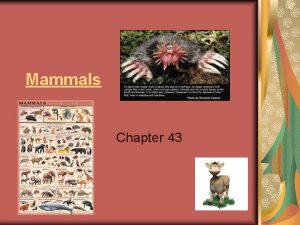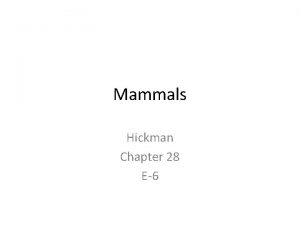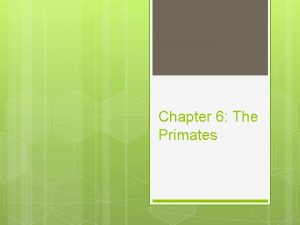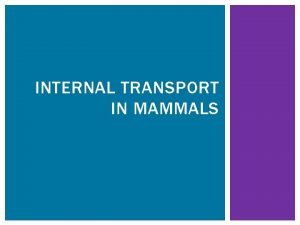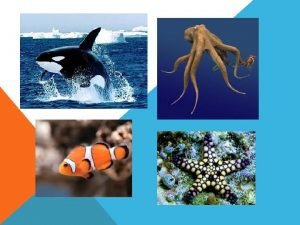Chapter 33 Mammals Section 1 Mammals Mammals Includes





































































- Slides: 69

Chapter 33: Mammals Section 1: Mammals

Mammals Includes many diverse species that vary greatly in appearance Range in size from a tiny mouse to a huge elephant Mammals can be found flying in the air, running along the ground, and swimming in the sea Although they differ in size and habitats, all members of the class Mammalia share certain characteristics

What Is a Mammal? Mammals are endothermic animals, which means they are able to generate substantial heat internally Most species are experts at maintaining a constant body temperature Mammals use various combinations of fur, hair, and subcutaneous fat to conserve body heat Many mammals also have sweat glands that help cool the body Sweat produced by sweat glands evaporates from the skin, lowering body temperature whenever necessary

What Is a Mammal? With the exception of a few species, all mammals are viviparous This means that young mammals develop within the mother for a time and then are born alive Female mammals have mammary glands, which produce milk to nourish the young for some time after they are born Mammary glands, which give mammals their name, are probably the most important characteristic that scientists use to include an animal in class Mammalia

What Is a Mammal? Mammals have several kinds of teeth Combined with their jaws, the teeth of mammals bite, chew, and grind food efficiently Mammals have well-developed breathing muscles, including a diaphragm Mammals have a four-chambered heart

One characteristic that unites all mammals is hair. This brown bear and her cubs can sleep through winter’s cold insulated by their thick coats and a layer of fat beneath their skin.

Be they lions or whales, all mammals breathe air. Breathing is easy for land mammals, but sea mammals must return to the surface to breathe. All female mammals nurse their young, feeding them milk they produce in mammary glands. These glands are the source of the class Mammalia’s name.

Evolution of Mammals The first mammals were very small By the end of the Cretaceous Period, the mammals had split into three groups n Monotremes w Only three species survive today w Duckbill platypus n Marsupials w Has a pouch in which its young lives for a time w Kangaroo n Placental mammals w Mammals you are most familiar with w Mice, cats, whales, elephants, etc.

Evolution of Mammals Because the fossil record is incomplete, it is hard to say precisely where and when each of these three groups appeared

The fossil record shows that the first mammals resembled this tree shrew. Tree shrews are omnivores; they eat both plants and animals.

Form and Function in Mammals have limbs and organ systems that have evolved many shapes to serve many functions in different environments

Feeding Carnivorous mammals, such as cats and dogs, have strong, sharp teeth called incisors and canines that are used for biting and ripping flesh from their prey Carnivores use an up and down chopping movement of their jaws to chew their food The behavioral and physical characteristics of many mammals allow them to capture prey

Feeding Herbivorous mammals, from cows to giraffes, eat plants that are tough and require thorough chewing in order to be digested Herbivorous animals have evolved strong lips and flat edged incisors that grasp and tear this tough vegetation They chew by moving their jaws from side to side, using flattened molars to grind the plant food into a pulp

Feeding Despite this efficient chewing, the cellulose that most plant tissues contain is impossible for mammals to digest on their own The vertebrate digestive system has never evolved the ability to produce enzymes that digest cellulose To help in the digestion of plant material, many grazing mammals have a chamber in their digestive tract called the rumen, in which newly swallowed plant food is stored and processed for a time

Feeding The rumen contains thriving colonies of bacteria that produce enzymes needed to break down cellulose After a certain amount of time, the mammal regurgitates the plant food from the rumen into its mouth There the partially digested food is again chewed and mixed with saliva “chewing their cud” The 2 nd time the food is swallowed, it moves through the rest of the digestive tract, where digestion is completed and nutrients are absorbed

Feeding Some herbivores, such as rabbits, lack a rumen but have a large dead-end sac, or cecum, forming part of their intestines Many of the same kinds of microorganisms that digest cellulose are found in the cecum The ancestors of modern humans had a cecum, but over time it has shrunk to the small, sometimes troublesome pouch we call the appendix

A mammal’s teeth provide important clues to its diet. The sharp, pointed teeth of a wolf show that this animal is a carnivore. The large flat grinding teeth of a deer indicate that this animal eats vegetation.

Respiration All mammals use lungs powered by two sets of muscles Chest muscles pull air in and push air out by moving the ribs up and down to increase and decrease the size of the chest cavity When the large muscle known as the diaphragm contracts, it pulls the bottom of the chest cavity downward, further increasing the cavity size and causing air to rush into the lungs Many mammals are able to use exhaled air to vibrate their vocal cords and produce a variety of sounds, such as a roar, a bark, or even a song

Internal Transport The mammalian circulatory system is an arrangement of pumps and blood vessels The main pump, the heart, sends deoxygenated blood to the lungs After it leaves the lungs, the now oxygenated blood returns to the heart and is pumped throughout the rest of the body via blood vessels The two separate circuits – one to and from the lungs, the other to and from the rest of the body – efficiently transports gases and nutrients to every cell of a mammal’s body

Excretion Mammals have the most highly developed kidneys of all vertebrates Mammalian kidneys extract nitrogenous wastes from the blood in the form of urea Urea, water, and other wastes form urine From the kidneys, urine flows to a urinary bladder, where it is stored until it is eliminated The kidneys can also retain salts, sugars, and other compounds the body cannot afford to lose

This desert fox survives in areas that have scant supplies of water. Mammals that live in desert regions have very efficient kidneys. Thus their urine contains little water.

Response Mammals have the most highly developed brains of any animals The brain consists of three parts: cerebrum, cerebellum, and medulla n n n Cerebrum: thinking, learning, understanding Cerebellum: movement Medulla: breathing, heart rate

Response Mammals depend on highly developed senses to provide themselves with information about their environment Eyes vary a great deal from one mammal species to another With the exception of apes, monkeys, and humans, mammals do not see color well

Response All mammalian ears are built on the same basic plan, they also vary a great deal in their abilities The senses of smell and taste are often more highly developed in other mammals than in humans More than any other animal group, mammals depend on complex behaviors for protection

Compared with other animals, a mammal has a large brain. Each antelope, alert to danger, is processing a great deal of information about the environment in its brain. If there is real danger, a delay of a fraction of a second could mean that the antelope will not survive.

Movement From the four limbs they inherited from their ancestors, mammals have evolved different structures for movement Running mammals can achieve great speeds on level ground Climbing mammals have hands and feet with flexible digits that can grasp vines and branches Flying mammals have arms modified to support flaps of skin that form wings Aquatic mammals have arms modified into flippers, which they use to control their speed and direction in the water

This baby monkey swinging from a tree branch shows only some of the movements mammals are capable of. Its long tail is useful in maintaining balance as it moves through the trees.

Reproduction The three groups of mammals differ greatly in their methods of reproduction Egg-laying mammals, the monotremes, are the most primitive mammals and reproduce much like reptiles n Oviparous n Lays eggs that are incubated outside the mothers body n Once the young hatch, however, they nurse on milk provided by the mother

Reproduction Marsupials are viviparous and bear their young alive The fertilized egg grows into an embryo inside the mother’s reproductive tract The embryo is supplied with nourishment by a yolk sac on the egg Because this yolk is not large enough to nourish the embryo through its entire developmental period, the embryo must leave its mothers womb very early

Reproduction At such an early age of development, the embryo is unable to survive alone Instinctively, it crawls across its mother’s fur into a pouch called the marsupium It spends the next several months there, growing sufficiently large and independent so that it can leave the pouch

Reproduction The early stages of placental embryos are much like those of marsupials But in placental mammals, the embryo’s chorion, amnion, and allantois develop differently Tissues from these membranes join with tissues from the mother’s uterus to form an organ called the placenta Nutrients, oxygen, carbon dioxide, and wastes are exchanged between embryo and mother through the placenta

Reproduction The time the embryo spends inside the uterus is called the gestation period The gestation period of mammals ranges from a few weeks in mice and rats to as long as two years in elephants The gestation period in humans is nine months

Reproduction After birth, most placental mammals provide their young with a period of care The duration of parental care varies among different species During the time infant and mother live together, the infant learns a great deal about its surroundings from its mother Many biologists believe that this long learning period is one of the most important benefits of the prolonged childhood of many mammals

A platypus is a strange animal. A female platypus feeds milk to her young – but only after the young have hatched from eggs laid by the mother.

The baby kangaroo, safely hitching a ride in its mother’s pouch, views the world around it with amusement. If danger threatens, mother and baby can quickly hop away.

This orangutan mother will care for her baby for some time. Rarely setting foot on the ground, the baby clings tightly to its mother’s fur.

Chapter 33: Mammals Section 2: Important Orders of Living Mammals

Important Orders of Living Mammals Scientists use several important characteristics to classify mammals The structure of teeth and the number and kinds of bones in the head are two important features by which mammals are classified But perhaps the most important characteristic used to classify mammals is the method of reproduction

Monotremes Egg-laying mammals Very rare Only three species exist today Live in Australia and New Guinea n Duckbill platypus n Echidna (2)


Marsupials Pouched mammals Found in Australia Herbivores that feed primarily on range grasses Opossums are the only marsupials found in North America today In the past, many other marsupials lived in South America


Placentals Living placental mammals are placed in 16 orders Placental mammals have slightly higher metabolic rates than those of marsupials They are also much more abundant than the marsupials

Order Insectivora Insect eaters Includes tree shrews, hedgehogs, shrews, and moles Have extremely high metabolic rates and must eat almost constantly


Order Chiroptera Contains many different species of bats Account for ¼ of all mammal species Many bats are active only at night Use echolocation to help them navigate Emit high pitched sounds that bounce off objects Colonies of bats sleep together in trees, hanging upside down and wrapping their wings around their body


Order Edentata “Without teeth” Sloths, anteaters, armadillos


Order Rodentia Mice, rats, squirrels, beavers, porcupines, gophers Two long front teeth that continue to grow during a rodent’s life Short gestation period


Order Lagomorpha Rabbits and hares Resemble rodents Sharp front teeth and eat plant material Their gestation period is short, and the number of young they produce is high


Order Carnivora Meat eaters Cats, dogs, wolves, bears, weasels, hyenas Most are terrestrial Kill with sharp teeth and claws


Order Cetacea Truly aquatic mammals: whales, dolphins, and porpoises Have lungs and a circulatory system designed to permit long, deep dives Layer of blubber keeps them warm Have lost both their external ears and their hind legs Mate and bear their young in the water All are carnivores


Order Sirenia Aquatic animals related to elephants Peaceful, slow-moving herbivores that live in rivers and streams in Africa, South America, and Florida The manatee, or sea cow, lives in quiet waters in southern Florida, where it is often injured by careless boaters


Order Artiodactyla Contains the large grazing animals: cattle, sheep, goats, hippopotami, giraffes, and pigs The original five toes on each foot have been reduced to two Even-toed ungulates n “hoofed mammal”


Order Perissodactyla Horses, zebras, tapirs, and rhinoceroses – the odd-toed ungulates Have hooves formed from the center toe of each foot


Order Proboscidea Mammals with trunks, the great elephants Only two species, the Indian elephant and the African elephant still survive Both species are in danger of becoming extinct


Order Primates Includes our own species Closely related to the ancient insectivores Most complicated behaviors Monkeys and apes represent two main branches within this order

Order Primates were split apart by the moving continents n One branch, the New World monkeys, live almost entirely in trees n They have long arms for swinging from branch to branch and long prehensile tails, which they use for grasping while climbing n The other branch, the Old World monkeys lack prehensile tails


How Mammals Fit into the World Herbivorous mammals are major consumers of plant material These herbivores are food for carnivorous mammals Bats eat mosquitoes and insects Domesticated mammals provide food in the form of meat and dairy products Some mammals carry disease Others destroy the land around them
 Tritheledont
Tritheledont Mammals and non mammals
Mammals and non mammals Chapter 30 section 2 diversity of mammals
Chapter 30 section 2 diversity of mammals Mammals characteristics
Mammals characteristics 32-1 introduction to mammals answer key
32-1 introduction to mammals answer key Study guide chapter 10 section 1 meiosis
Study guide chapter 10 section 1 meiosis Similarities between mammals and amphibians
Similarities between mammals and amphibians Digestion in fish
Digestion in fish Rabbits are small mammals in the family
Rabbits are small mammals in the family Parthenogenesis
Parthenogenesis What us a mammal
What us a mammal 10 characteristics of mammals
10 characteristics of mammals Plantigale
Plantigale Characteristic of
Characteristic of What do mammals have
What do mammals have Whale characteristics
Whale characteristics Mammals dentition
Mammals dentition Similarities between mammals and amphibians
Similarities between mammals and amphibians Amphibians reptiles mammals birds fish
Amphibians reptiles mammals birds fish Ekskresi
Ekskresi Text derek
Text derek Mammals are vertebrates
Mammals are vertebrates Monetremes
Monetremes Marsupils
Marsupils Are birds mammals
Are birds mammals Animal behavioral adaptations examples
Animal behavioral adaptations examples Animals and their characteristics
Animals and their characteristics Homeostasis in mammals
Homeostasis in mammals Three basic scale patterns hair
Three basic scale patterns hair Earth day endangered animals
Earth day endangered animals Alimentary canal of mammals
Alimentary canal of mammals Hair
Hair Some bacteria benefit mammals by helping with
Some bacteria benefit mammals by helping with Mammals
Mammals Mammals animals
Mammals animals Synapsids
Synapsids Light can travels from the sun
Light can travels from the sun Ocean currents project
Ocean currents project Male reproductive system of mammals
Male reproductive system of mammals Characteristics of mammals
Characteristics of mammals Echolcation
Echolcation Characteristics of seals
Characteristics of seals Class mammalia characteristics
Class mammalia characteristics Orca whale eyespot
Orca whale eyespot The mcgraw-hill
The mcgraw-hill 175 mya
175 mya 32-1 introduction to mammals
32-1 introduction to mammals Which sentence contains an infinitive phrase?
Which sentence contains an infinitive phrase? Chapter 18 visual merchandising and display
Chapter 18 visual merchandising and display What are intellectual traits
What are intellectual traits Use case extend
Use case extend Popular culture examples
Popular culture examples Comedy of idea
Comedy of idea Marketing research functions
Marketing research functions Circulatory system tissue
Circulatory system tissue Definition of vocabulary
Definition of vocabulary Waves produced by stars and galaxies
Waves produced by stars and galaxies Sports includes all forms of competitive activity or games
Sports includes all forms of competitive activity or games Uses of size separation
Uses of size separation What is spontaneous financing
What is spontaneous financing Sad tone words
Sad tone words In sedimentary rocks lithification includes
In sedimentary rocks lithification includes Meaning of management accounting
Meaning of management accounting Closure property of context free grammar
Closure property of context free grammar Performance management
Performance management Pengertian include dan extend
Pengertian include dan extend Emotions influence driving because they
Emotions influence driving because they Analyze phase - includes
Analyze phase - includes Esi edge side includes
Esi edge side includes Lion belongs to what trophic levels
Lion belongs to what trophic levels
